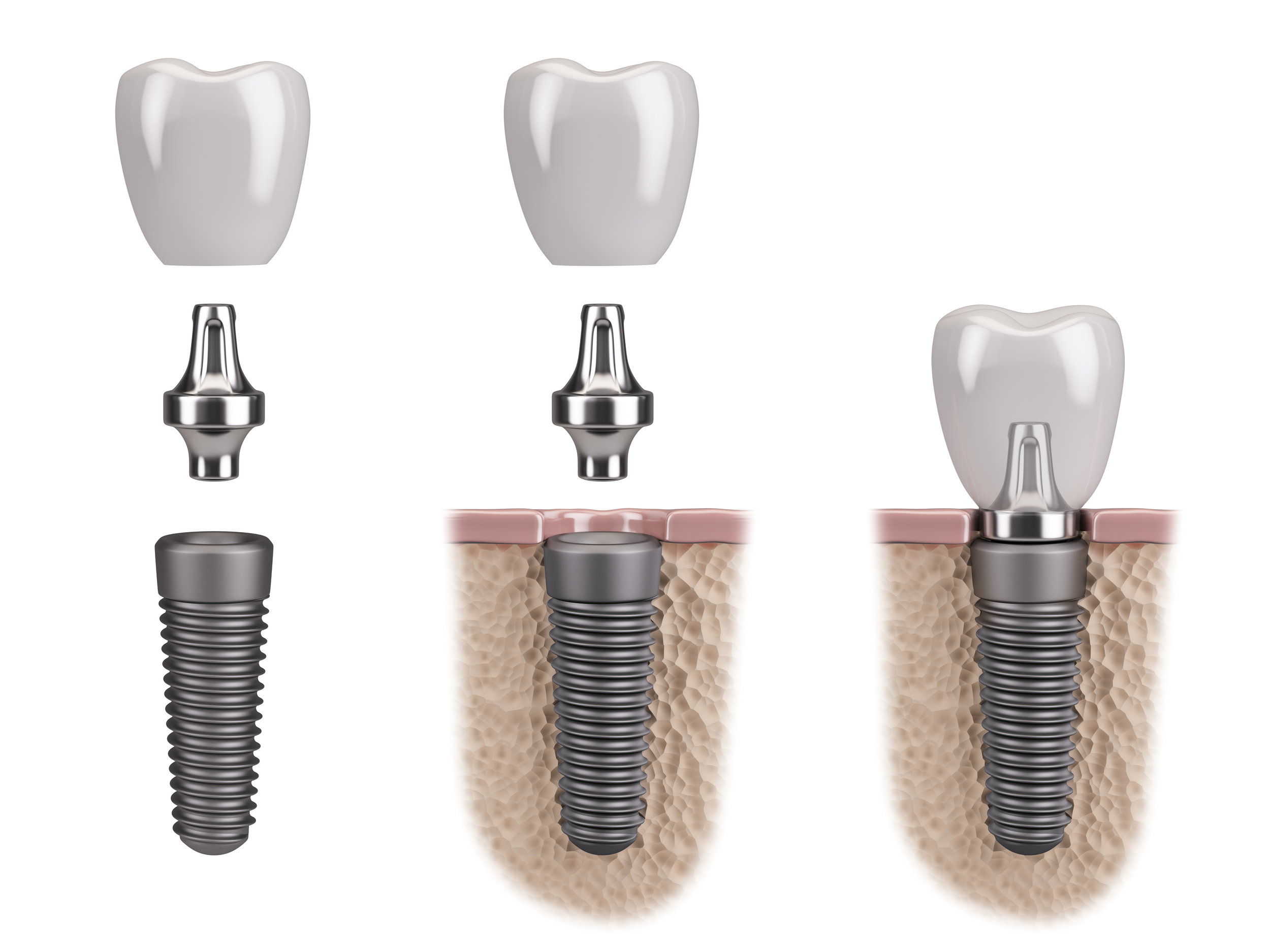DENTAL IMPLANTS
Dental implants are a popular and effective long-term solution for people who suffer from missing teeth, or chronic dental problems. Dental implants offer a natural looking replacement for adult teeth. They also can provide stability and support for removable complete and partial dentures. Implants can restore functionality to the jaw; making speaking, eating and chewing easier. They are the closest things we have to our real teeth, restoring form, function, esthetics, and something we refer to as proprioception. Proprioception is associated with the ability to feel pressure and sense position in the body and jaw. This sensory quality can NOT be achieved with dentures or bridges.
Most implants are comprised of a screw that is embedded into the bone, and a post (or “abutment”), to which the artificial tooth is attached. With some implants the post and anchor are already attached and placed at the same time.
WHAT TO EXPECT:
The process of getting implants requires a number of visits over several months. The specific time needed for each individual is case-dependent. In some circumstances, implants can be placed right away. In others, after an extraction, the area may have to heal and an infection will have to resolve for a few months before an implant can be placed.
PRESURGICAL PHASE:
Once we ready to place the implant. we start with x-rays and impressions (molds) of the jaw and teeth to determine bone, gum tissue, and spacing available for an implant
SURGICAL PHASE 1 :
While the area is numb, the implant will be surgically placed into the bone and allowed to heal and integrate itself for up to six months. This process is called osseointegration and is imperative for the success of the implant.
SURGICAL PHASE 2:
Depending on the type of implant and , a second surgery may be required in order to uncover the implant and make adjustments to the contour of the bone around the implant.
RESTORATIVE & RECOVER PHASE:
Once we have the green light to restore the tooth, we will start by fitting for the abutment and crown. Often, in order to obtain proper angulation for esthetics and function, we will need to fabricate a custom abutment. The angulation of the implant is often dictated by the quality & quantity of bone in the area.
After several months of healing, the restorative process will begin with a fitting. Using special & very specific pieces, we will take an impression that will be sent to our dental labs. Because several fittings may be required, this step may take one to two months to complete. The final visit will involve securely attaching the abutment to the implant, providing excellent stability and comfort to the patient, restoring form, function, and esthetics.


